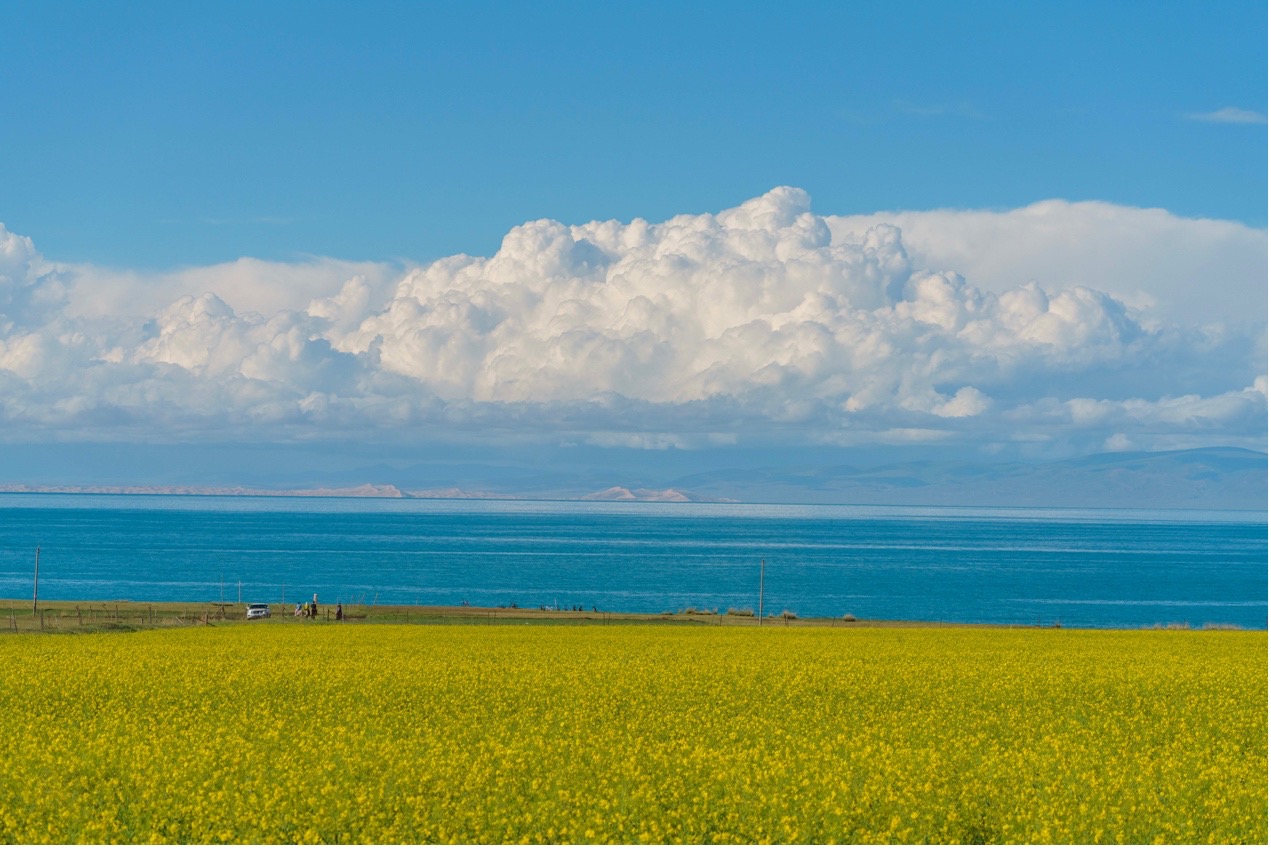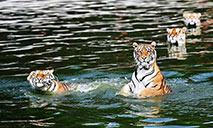Enjoy stunning scenery along Qinghai Lake
Photo taken on July 28, 2021, shows the stunning view of cole flowers next to Qinghai Lake at Hainan Tibetan Autonomous Prefecture in northwest China’s Qinghai Province. (People’s Daily Online/Zhang Ruohan)
Lying on the northeastern edge of the Qinghai-Tibetan Plateau, Qinghai Lake is the largest inland saltwater lake in China. The lake features two sub-lakes: the saline Gahai Lake and freshwater Erhai Lake. Surrounded by lofty mountains, Qinghai Lake dazzles like a crystal-clear gem, boasting great charms that draw tourists to explore it.
Summer is the best time to visit Qinghai Lake, as numerous cole flowers blossom along the lake under the blue sky, forming breathtaking scenes for visitors. Every year, millions of tourists are drawn to Qinghai Lake to grab a glimpse of the spectacular and colorful view, which provides a uniquely raw landscape for creations by photographers and oil painters.
May and June are the best seasons for birdwatching, as the mild weather creates a favorable environment for different kinds of birds to breed here, making Qinghai Lake a paradise for bird lovers. Cyclists from across the country can be seen scattered around Qinghai Lake, looking to enjoy the beauty of the lake view and while away the time.
Qinghai Lake is not only a bustling tourist attraction but also a crucial body of water for maintaining ecological security in the northeastern part of the “roof of the world”, the Qinghai -Tibet Plateau. With 4,549.38 square kilometers of water area, Qinghai Lake serves as a species gene pool. In 2008, Qinghai Province launched a 10-year plan on ecological environment protection and comprehensive management of the Qinghai Lake Basin with a total investment of 1.57 billion yuan.
The heavy investment in ecological protection has paid off. The improving aquatic ecosystem of Qinghai Lake has made it one of the regions with the richest biodiversity on the plateau.
The lake has become a key habitat for wintering of more and more migratory birds, with over 100,000 birds stopping here during their migratory journeys every year.
 |
Photos
Related Stories
- China employs 546 "fish guards" to protect ecology in Qinghai Lake
- Conservation efforts help restore Qinghai Lake ecology
- Picturesque blue ripples in Qinghai Lake
- Young people's dedication leads to reversal of declining naked carp numbers in China's largest salt lake
- Scenery of Qinghai Lake in northwest China
Copyright © 2021 People's Daily Online. All Rights Reserved.











